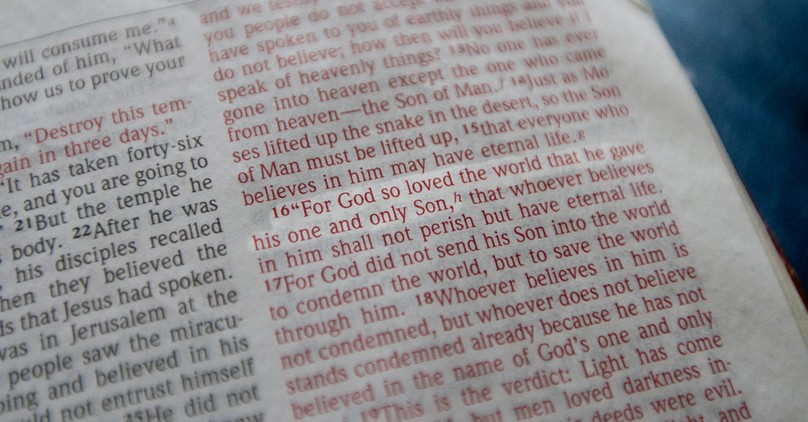
The history of Bible translation goes back many centuries. In the present day, we often don’t think about the history of Bible translation, yet this is an important part of theology. The ultimate source of Bible translation begins with the original manuscripts. These original manuscripts have now been translated into the translations we have today. There have been many new translations that have come into being, including the New International Version (NIV), the English Standard Version (ESV), and the Christian Standard Bible (CSB). Yet, these are not the only translations we have today.
Let's do a deep study on the history of Bible translation.
The Genesis of Bible Translation
According to the Wycliffe Bible Translators, Bible translations started roughly in 200 B.C. During 200 B.C., the Jews were living in Egypt, and they were no longer speaking their native language of Hebrew or Aramaic. The original manuscripts of the Old Testament were written in Hebrew and Aramaic; therefore, the Jews knew they needed to translate the Old Testament manuscripts into the most popular language of the day, Greek.
The Jews decided to begin their translation from Hebrew and Aramaic into Greek by starting with the first five books of the Bible, known to the Jews as the Torah. This translation of the Bible came to be known as the Septuagint. The first books in the Septuagint included Genesis, Exodus, Leviticus, Numbers, and Deuteronomy. Over time, the Jews added the rest of the books of the Old Testament to complete the Septuagint. The Septuagint was still used during Jesus’ earthly ministry over two hundred years later.
The Early Church
The early church used the Greek translation of the Old Testament (the Septuagint) and the New Testament, which now consisted of the four Gospels, the Pauline Epistles, the General Epistles, and Revelation. The New Testament was written in Koine Greek, which was the popular language when the New Testament was being written. The Old Testament and the New Testament were widely used and circulated among the apostles as well as all believers.
Over time, the Bible was translated into Latin, Syriac, Coptic, Gothic, and Ethiopic as needed for the local believers. About a thousand years later, another major influx of Bible translations began, around the time of the Reformation. John Wycliffe translated the Bible from Latin into English, William Tyndale and Myles Coverdale translated the Bible from Greek and Hebrew into the modern English language we have today, and Martin Luther translated the Bible into German.
During the 1400s, the printing press was invented, which made it easier for the Bible to be published, printed, and distributed. Across Europe, the Bible became extremely popular and easy to find. The major Bible translation at this time was the Latin Vulgate. The Latin Vulgate had been initially published in 405, yet it remained popular for many decades. Those who had access to the Latin Vulgate could read, study, and meditate on the Bible by themselves without clergy withholding the manuscripts.
This was a key reason why Martin Luther translated the Bible into German. Martin Luther wanted all common, everyday individuals to have access to the Bible. He had seen with his own eyes the terrors and manipulation the Pope was pressing onto the people. The clergy of the Roman Catholic Church was extremely controlling and didn’t want the average man or woman to have access to the Scriptures. By doing this, they could control the individuals and trick them into believing things that were not in alignment with the true Scriptures, such as purgatory, the rosary, or penance. Most notably, the Pope pushed a false concept called indulgences, in which he commanded that people pay the church for the forgiveness of their sins as access to heaven. Through Martin Luther’s translation of the Bible into German, the everyday people of Germany now had access to the Old Testament and the New Testament in their native tongue.
Following the original translations in Europe, additional translations of the Bible included: the Matthew’s Bible (1537), the Taverner’s Bible (1539), the Great Bible (1539), the Geneva Bible (1560), the Bishop’s Bible (1568), Douay-Rheims Bible (1582), the King James Bible (1611), the Quaker Bible (1764), Thomson’s Translation (1808), Young’s Literal Translation (1862), Julia E. Smith Parker Translation (1876), Revised Version (1881-1885), Webster’s Revision (1883), American Standard Version (1900-1901), the Revised Standard Version (1952), New American Standard Bible (1960-1971), New International Version (1973-1978), New King James Version (1979-1982), the New Revised Standard Version (1989), World English Bible (2000), the English Standard Version (2001), Holman Christian Standard Bible (1999-2004), New English Translation (2005), Modern English Version (2011-2014), and the Christian Standard Bible (2017).
Most Recent Wave of Translation
The most recent wave of Bible translation occurred about two hundred years ago in the 19th century. Throughout the 19th century, the Bible was translated into nearly 500 languages across the globe. The Wycliffe Bible Translators have the goal of continuing to translate the Bible into the native tongues of different people groups across the world. There are many other Bible organizations focused on translating the Bible to help others be able to read the Bible in all its brilliance in their own tongue.
When we read the Bible, we have to be careful with which translation we utilize. I utilize the New International Version (NIV) in my Bible study, yet any of the versions listed are great for personal Bible study. The only version I would be hesitant about using for Bible study is the King James Version (KJV). While the King James Version has beautiful, poetic language, it is not the best for Bible study because the English they use is not the same English we use today. Since it does employ a language mainly from 1611, it is best to use a more modern translation of the Bible to help you in your Bible study, such as the New International Version, the English Standard Version, or the Holman’s Christian Bible.
It should also be noted that the Message (MSG) is only a paraphrase and not a translation of the Bible. The same goes with the Passion Bible, as neither of these versions is true translation, but rather paraphrases. The Message is extremely popular today, yet I would deter individuals from using this version of the Bible because it does not adhere to the deep translation process. The Bible is the most important book ever written, and we must treat it with the utmost respect. Since it is the Word of God, we need to use the most accurate translations to truly know what God says rather than reading a loose paraphrasing of the Bible.
Bible translation is ongoing as there are new revisions of Bible versions nearly every year. It is good to keep the revisions up to date to keep the language understandable to the reader. In addition to revisions, the Bible is still in the process of being translated into new languages across the world. There are still many people groups across the globe who do not have the Bible translated into their own native language. Therefore, there is still much work to be done to help the Bible be translated into the different languages worldwide.
If you would like to help in the ministry of Bible translations, you can get involved with Wycliffe Bible Translators or Tyndale Bible Translators. They are hiring for positions and also have volunteer opportunities year-round. If you feel God is calling you into Bible translation, these would be two great organizations to look into. You can help make a difference in the lives of others by helping them receive a Bible in their own language.
Photo Credit: ©Sparrowstock









